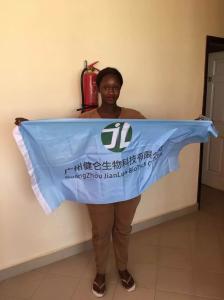


|



| 产地 | 美国 |
| 品牌 | CORTEZ |
| 货号 | 2°—8°C |
| 保存条件 | |
| 保质期 | 个月 |
莱姆病(Lyme)快速检测试剂盒
Lyme Disease IgG
莱姆病(Lyme disease)是由伯氏疏螺旋体所致的自然疫源性疾病,又称莱姆疏螺旋体病(Lyme borreliosis)。临床表现主要为皮肤、心脏、神经和关节等多系统、多脏器损害。 本病为全球性疾病,由来已久。1900年欧洲的皮肤病文献中已有慢性游走性红斑(erythema chronicum migrans,ECM)的记载,1905年美国康涅狄格州开始有ECM的病例报道。1975年又在该州的Lyme镇发生曾被诊断为青少年类风湿关节炎的疾病流行,称为“Lyme关节炎”。1978年证明该病是由硬蜱叮咬传播的一种多系统受累的传染病,所以称为莱姆病。1982年从蜱体内分离到螺旋体,1984年证实此病原体属包柔螺旋体属(Borrelia),亦称疏螺旋体属。由于本病分布广,传播快,致残率高。

莱姆病毒gM抗体检测试剂盒(胶体金法)
莱姆病毒IgG抗体检测试剂盒(胶体金法)
莱姆病毒IgG抗体ELISA免疫试剂盒
莱姆病毒IgM抗体ELISA免疫试剂盒
PRINCIPLE OF THE ELISA ASSAY
The Diagnostic Automation B. burgdorferi ELISA test system is designed to detect IgG class
antibodies to B. burgdorferi in human sera. Wells of plastic microwell strips are sensitized by
passive absorption with B. burgdorferi antigen. The test procedure involves three incubation
steps:
1. Test sera (properly diluted) are incubated in antigen coated microwells. Any antigen specific
antibody in the sample will bind to the immobilized antigen. The plate is washed to remove
unbound antibody and other serum components. 2. Peroxidase Conjugated goat anti-human IgG (γ chain specific) is added to the wells and the
plate is incubated. The Conjugate will react with IgG antibody immobilized on the solid phase
in step 1. The wells are washed to remove unreacted Conjugate. 3. The microwells containing immobilized peroxidase Conjugate are incubated with peroxidase
Substrate Solution. Hydrolysis of the Substrate by peroxidase produces a color change. After
a period of time the reaction is stopped and the color intensity of the solution is measured
photometrically. The color intensity of the solution depends upon the antibody concentration in
the original test sample.
SPECIMEN COLLECTION 1. It is recommended that specimen collection be carried out in accordance with NCCLS
document M29:Protection of Laboratory Workers from Infectious Disease. 2. No known test method can offer complete assurance that human blood samples will not
transmit infection. Therefore, all blood derivatives should be considered potentially infectious. 3. Only freshly drawn and properly refrigerated sera obtained by approved aseptic venipuncture
procedures should be used in this assay (6, 7). No anticoagulants or preservatives should be
added. Avoid using hemolyzed, lipemic, or bacterially contaminated sera. 4. Store sample at room temperature for no longer than 8 hours. If testing is not performed within
8 hours, sera may be stored between 2° and 8°C for no longer than 48 hours. If delay in
testing is anticipated, store test sera at –20°C or lower. Avoid multiple freeze/thaw cycles that
may cause loss of antibody activity and give erroneous results.
REFERENCES:
1. Steere AC, Taylor E, Wilson ML, Levine JF, and Spielman A: Longitudinal assessment of th clinical and epidemiologic features of Lyme disease in a defined population. J. Infect. Dis.
154:295-300, 1986. 2. Rosenfeld MEA:Serodiagnosis of Lyme disease. J. Clin. Microbiol. 31:3090-3095, 1993. 3. Steere AC, Grodzicki RL, Kornblatt AN, Craft JE, Barbour AG, Burgdorfer W, Schmid GP,
Johnson E, and Marawista SE: The spirochetal etiology of Lyme disease. New Engl. J. Med 308:733, 1983. 4. Bakken LL, Callister SM, Wand PJ, and Schell RF:Interlaboratory comparison of test results for detection of Lyme disease by 516 patients in the Wisconsin State Laboratory of
Hygiene/College of American Pathologists Proficiency Testig Program. J. Clin. Microbiol.
35:537-543, 1997. 5. U.S. Department of Labor, Occupational Safety and Health Administration: Occupational
Exposure to Bloodborne Pathogens. Final Rule. Fed. Register 56:64175-64182, 1991. 6. Procedures for the collection of diagnostic blood specimens by venipuncture - Second editio Approved Standard (1984). Published by National Committee for Clinical Laboratory
Standards. 7. Procedures for the Handling and Processing of Blood Specimens. NCCLS Document H18-A Vol. 10, No. 12, Approved Guideline, 1990. 8. Russel H, Sampson JS, Schmid GP, Wilkinson HW, and Plikaytis B: Enzyme-linked
immunosorbent assay and indirect immunofluorescence assay for Lyme disease. J. Infect.
Dis. 149:465, 1984. 9. Magnarelli LA, Anderson JF, and Johnson RC: Cross-reactivity in serological tests for Lyme disease and other spirochetal infections. J. Infect. Dis. 156:183-188, 1987. 10. Hunter EF, Russell H, Farshy CE, et al: Evaluation of sera from patients with Lyme disease the fluorescent treponeme antibody-absorption test for syphilis. Sex. Trans. Dis. 13:236,
1986. 11. Steere AC, Hutchinson GJ, Rahn DW, Sigal LH, Craft JE, DeSanna ET, and Malawist SE:
Treatment of the early manifestations of Lyme disease. Ann. Intern. Med. 99:22, 1983. 12. Craft JE, Grodzicki RL, Shrestha M, Fischer DK, Garcia-Bianco M, and Steere AC: Antibody response in Lyme disease. Yale J. Biol. Med. 57:561, 1984. 13. Shrestha M, Grodzicki RL, and Steere AC: Diagnosing early Lyme disease. Am. J. Med.
78:235, 1985. 14. Reik L, Smith L, Khan A, and Nelson W: Demyelinating encephalopathy in Lyme disease.
Neurology 35:267, 1985. 15. Barbour A:Laboratory Aspects of Lyme Borreliosis. Clin Micr. Rev. 1:399-414, 1988.
公司座机:020-82574011 欧村桐
手机联系:13802525278 杨永汉